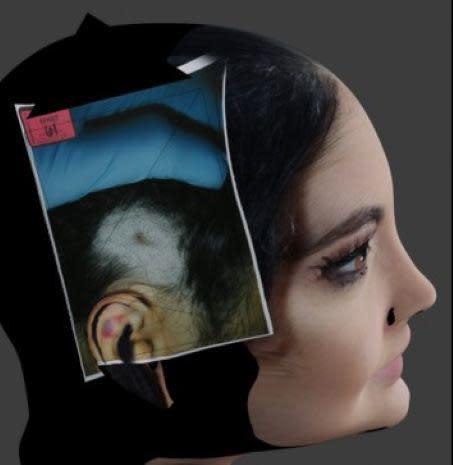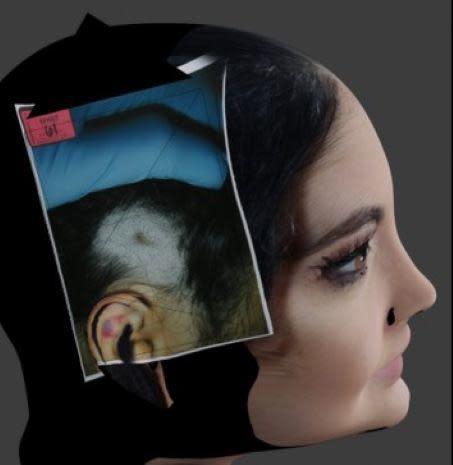Cayley Mandadi was a 19-year-old sophomore at Trinity University when she arrived at a hospital in Texas on October 29, 2017. She was almost naked, bruised and not breathing. Her former boyfriend Mark Howerton told doctors they had taken ecstasy at a music festival, and she passed out after having consensual sex in his car. She died in hospital.
Mandadi's mother Alison Steele and stepfather Lawrence Baitland believed something far more sinister had happened and wanted to prove it. "48 Hours" correspondent Peter Van Sant reports on the case in "For the Love of Cayley Mandadi," airing Saturday, January 20 at 10/9c on CBS and streaming on Paramount+.
At 4 a.m. on October 30, 2017, Mandadi's parents woke up to an alarming phone call. They were told that Cayley had made a life flight to Kyle, Texas and had been involved in an incident.
They ran from their home in Houston to the hospital. "I saw my daughter's body destroyed," Steele recalled. Mandadi was unconscious and covered in bruises. The doctor told them there was no hope of recovery.
On October 31, Mandadi was taken off life support. Steele and Baitland said their final goodbyes before Mandadi underwent surgery for organ donation.
The medical examiner ruled that Mandadi died of blunt force trauma to the face and head and ruled her death a homicide. Howerton was charged with murder.
Howerton maintained his innocence and his trial began in December 2019. Prosecutors alleged Howerton struck Mandadi in his car, causing a fatal brain hemorrhage.
Howerton's attorney, John Hunter, said Howerton did not cause Mandadi's injuries. He argued that her injuries were caused by resuscitation efforts by hospital staff and medical complications resulting from MDMA use.
After ten hours of deliberation, the jury could not reach a verdict and the judge declared a mistrial.
While prosecutors planned to retry Howerton, Steele and Baitland decided the jury needed more information about what happened to their daughter in Mandadi's car. Steele, a scientist, and Baitland, a NASA engineer, got to work.
"We're not prosecutors, we're not doctors, but we know people who have these skills and maybe we can develop a way to crowdsource answers to this case. And that's what we did," Steele told 48 Hours. "We started calling, we started making inquiries."
Steele said they were overwhelmed by offers from experts, including doctors, forensic scientists and even a medico-legal death investigator, to help them examine evidence in Mandadi's case. They gathered all the evidence they could.
"What we did was take that evidence and make sense of it in a way that wasn't done in the first trial," Steele said.
The couple focused their attention on an autopsy photo showing a bruise in the shape of a small dot above Mandadi's right ear, and another photo showing a larger bruise above her left ear. Steele says they came up with the theory that Mandadi's fatal injury occurred when Howerton "reached from his driver's seat, punched her in the left ear and drove her head into the window and lock button of the car." Now they had to prove it.
So they went to a used car lot where Baitland took photos of Steele posing in a car that resembled the Mercedes Howerton drove the night Mandadi was fatally injured.
Baitland told "48 Hours" that he was "shooting [Steele's] head in different positions while... you hold the autopsy images and try to see if they match the door and if it's an almost perfect match.'
Encouraged by their findings, Baitland used a software program to construct a 3D model of Mandadi's head. He included photos of Mandadi and the autopsy photo showing that dot above Mandadi's right ear. He used a measurement from Mandadi's glasses to help determine the size of the 3D head. Baitland then consulted a biomechanical expert in the field of injury causation, who examined Baitland's evidence and research and supported his theory.


"So this gave me the confidence to move on to the next step, which is searching [Mark Howerton's] car," Baitland said.
Baitland tracked down the Mercedes that Howerton sold in 2018. "I contacted some friends on social media who were on a car forum and they were able to look up the VIN number of [the] car for me," he said.
Initially, the new owner was hesitant to sell Baitland's car, but after hearing Mandadi's story, he agreed. Baitland said the drive home was "torturous" but necessary for their investigation. "We had to have the vehicle to show how she was attacked."
Baitland and Steele then commissioned a reenactment video of what they believe happened in the car. Using evidence photos, they focused on every little detail, including what Mandadi and Howerton were wearing and what items were in the backseat. They even hired actors similar in size and weight to Mandadi and Howerton.
The reenactment video is simple: it shows three angles of what Mandadi's parents and their experts thought caused the fatal injury to her head.
Prosecutors in the case told "48 Hours" they have never seen a victim's family go to such lengths. Howerton's attorney, John Hunter, believes the parents' investigation is "unscientific" and fails to prove his client's guilt.
Will the parents' research be a breakthrough for... The second trial of Mark Howerton?
Why the LA Innocence Project takes on Scott Peterson's murder case
The basketball coach's exuberant celebration of his son's goal goes viral
A look at the USS Bataan's role in the Middle East
